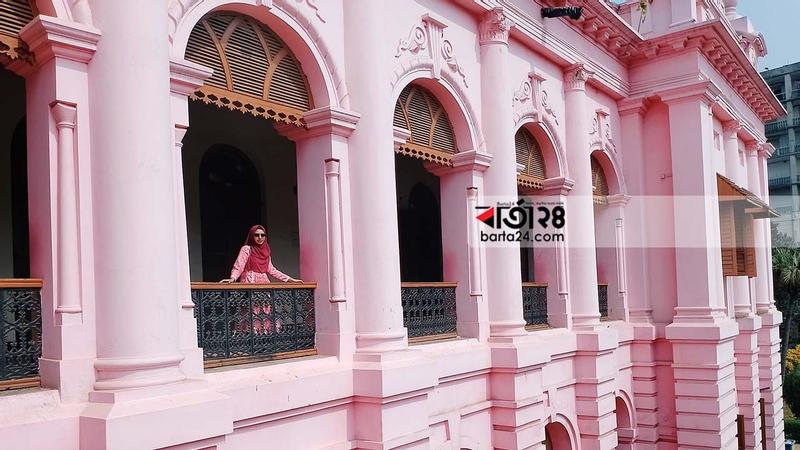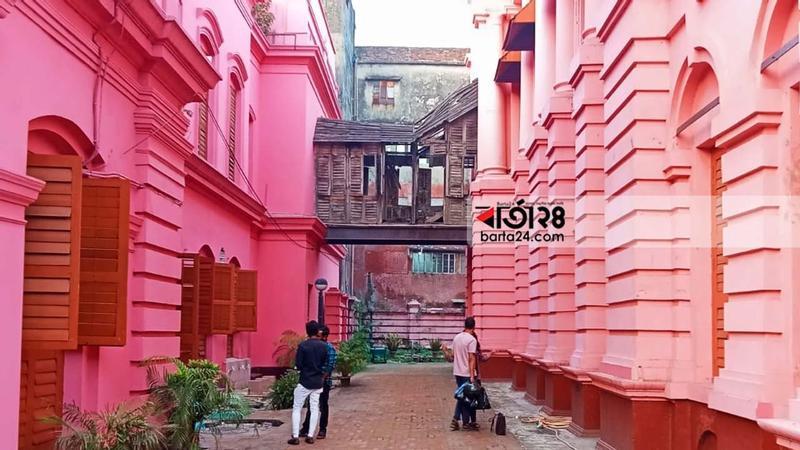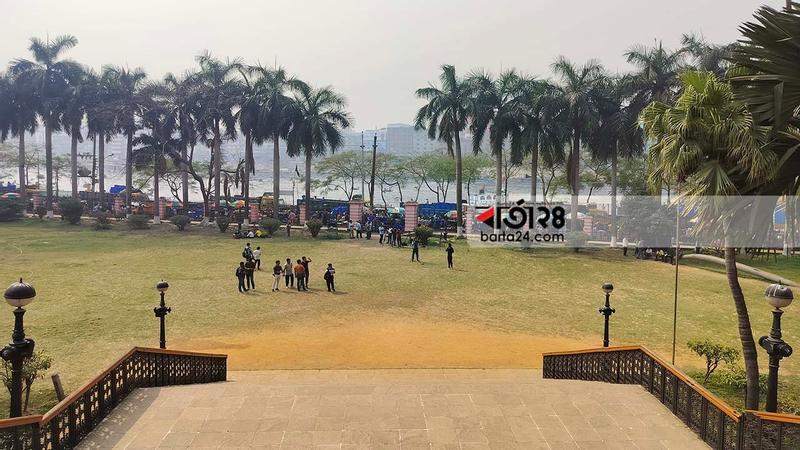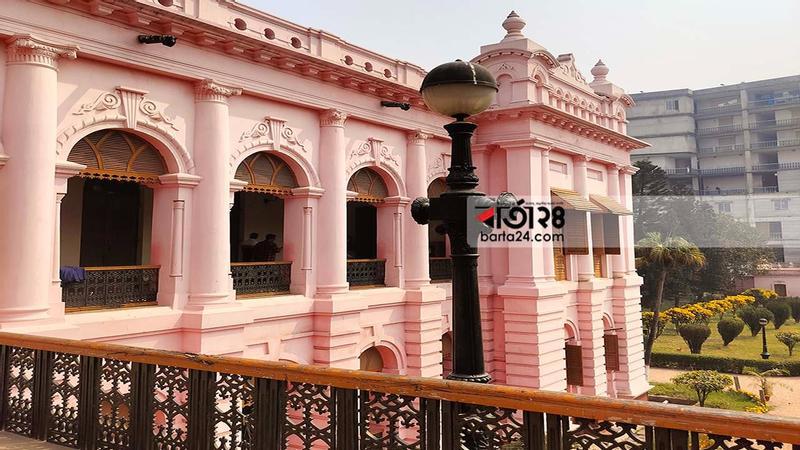Buriganga has changed but Ahsan Manzil did not change!
Buriganga has changed. How much water have flowed through this river over time. The life of the riverside people has changed. The droughty form of Buriganga is lost. There is no beauty of that filled river, no wandering of the Mughal Nawabs!
However, the Bakarkhani of the Mughal period remains as a witness of the times. There is the traditional Shahi Biryani of old Dhaka. At the same time, historical Ahsan Manzil is still standing proudly on the banks of ugly Buriganga.
People who love tourism have great interest and curiosity about this sign of history and tradition.
The capital Dhaka is called the magic city. The busy and wanderlust residents of the capital Dhaka rush to Ahsan Manzil on the banks of the Buriganga whenever they get some free time.

Ahsan Manzil
Two story building with aesthetic workmanship on the walls of the building. A large staircase descends from the second floor and merges with the green field. There is a beautiful flower garden in front. Buriganga flows by the side. Each room of this two-storied palace is octagonal. Inside the building there is a dining hall, a durbar hall, a billiard room and an aquarium. The balconies and floors of the palace are made of marble stones. If you go to the second floor of this palace, you will see guest rooms, living room, library, dance hall and some other living rooms.
Ahsan Manzil is mainly divided into two parts. The domed part on the eastern side is called the Palace Bhawan or Rang Mahal and the building on the western side is called the Inner Mahal.

There is a myth that Ahsan Manzil is the first brick building in Dhaka city. Its construction started in 1859 AD and ended in 1872 AD. With 23 galleries, this building has about 4500 exhibits.
Currently Ahsan Manzil is being used as a 'Museum' of Dhaka's history. It has on display – Nawab period dining room, cupboards, chests, various types of Nawab period ornate silver and crystal chairs-tables, large mirrors, glass and porcelain tableware, skeletons of elephant heads, various oil paintings, vases modeled by Ahsan Manzil with pandan.
In the middle of the 19th century, the representative of the Mughal Nawabs of Dhaka, the Naib Nazim clan, became extinct. Then there was a vacuum in the social and political leadership of the Muslims. Kumartuli's Khawaja family came forward to fill this void. This family ruled for almost a century.
The British government granted the right to use the title of 'Nawab' to the Khawaja family in recognition of various financial and charitable works. As a result, they later came to be known as the Nawab family of Dhaka.

According to historians, during the pre-Mughal Sultanate period, localities were usually named after the occupation of the local residents. Tantibazar, Shankari Bazar etc. of the capital still bear the identity of the occupation of those residents.
Mughal Subedar Islam Khan first set foot on the banks of the Buriganga when he came to Dhaka. Later this area was named Islampur after him.
In the mid-eighteenth century, a zamindar of Jamalpur pargana, Sheikh Inayetullah Ahsan, built a palace called Rangmahal at the present site of Manzil. Later his son Sheikh Matiullah sold it to French merchants. Since then the Rangmahal has been known as a trade hub for a long time.
Later, in 1830, Khwaja Alimullah, father of Nawab Abdul Gani, who lived in Begumbazar, bought the Rangmahal. Abdul Gani started building the palace in 1859 and completed the work in 1872. After construction, he named the palace Ahsan Manzil after his beloved son Khwaja Ahsanullah.
Tickets:
If you want to enter Ahsan Manzil, you have to buy a ticket for Tk. 40 per person. Tk. 20 per person for minors. Each ticket is priced at Tk. 300 for SAARC citizens. Tk. 500 for citizens of other countries. Tickets are available up to half an hour before Ahsan Manzil closes.

Schedule:
Ahsan Manzil is closed every Thursday including other public holidays. During winter (October to March) open Saturday to Wednesday 10.30am to 4.30pm, Friday 2.30pm to 7.30pm.
Open Saturday to Wednesday 10.30am to 5.30pm during summer (April to September). Open on Fridays from 3pm to 7:30pm.
How to go:
From any part of the country, you have to come to Dhaka first by any vehicle including bus, train and launch. After reaching Syedabad/Jatrabari by bus, you can take rickshaw or taxi cab from there. You can also take Bahadur Shah Paribahan Mini Bus to Bahadur Shah Park / Jagannath University. Later you can reach Ahsan Manzil in 10-15 minutes by rickshaw or on foot.

Jagannath University can be reached by Skyline and Ajmeri Paribahan buses from Mahakhali in the capital.
Coming from Gabtali, one can reach Jagannath University by Savar Paribahan bus. Then you can come by rickshaw or walk.
If you come by train, you can take Uber or rickshaw from Kamalapur. Ahsan Manzil is a 10-minute walk from the Sadarghat Terminal.